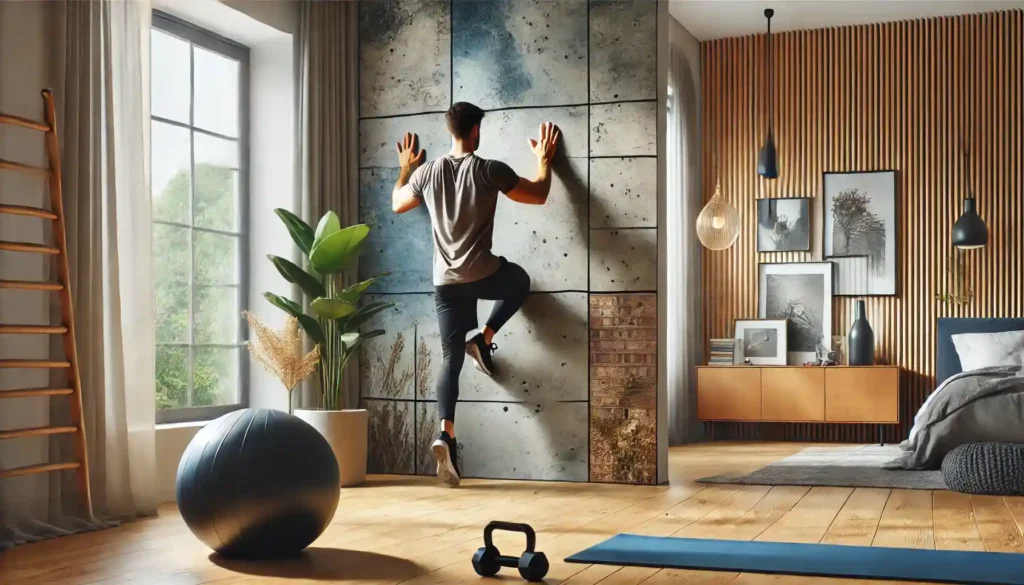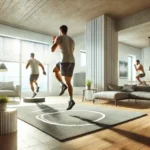Wall Pilates is continuing to grow in popularity due to its benefits for muscle tone and strength without high-impact stress on the body. This workout is ideal for those looking for a gentle yet effective exercise routine. It combines the principles of Pilates with the added support and resistance provided by the wall, making it accessible and beneficial for people of all fitness levels.
Physical fitness is the first requisite of happiness.
— Joseph Pilates
This quote by Joseph Pilates emphasizes the importance of physical fitness in achieving overall happiness and well-being. Wall Pilates fits this philosophy perfectly, as it provides a comprehensive workout without the strain associated with high-impact exercises.

Benefits of Wall Pilates
Enhancing Muscle Tone and Strength
Wall Pilates offers significant benefits in enhancing muscle tone and strength.
- Targeted Exercises: This method focuses on specific muscle groups like abs, glutes, and legs. By leveraging the resistance of the wall, these exercises effectively engage and strengthen these areas.
- Resistance Training: Utilizing the wall for resistance increases muscle engagement. This form of resistance is particularly beneficial as it provides a stable and safe environment for performing various exercises.
These exercises help in toning muscles efficiently without the need for heavy weights or machines, making Wall Pilates a versatile and accessible workout option.
Gentle on Joints
This workout is gentle on the joints, making it suitable for all ages and fitness levels.
- Minimal Stress: The exercises reduce the risk of injury by eliminating high-impact movements. This is especially beneficial for those with pre-existing joint conditions or for older adults who need a low-impact workout.
- Gentle Movements: Ideal for those with joint issues or recovering from injuries. The support of the wall allows for controlled and precise movements, reducing the risk of overstretching or improper form.
Fitness is not about being better than someone else… It’s about being better than you used to be.
— Khloe Kardashian
Khloe Kardashian’s quote reminds us that fitness is a personal journey, which aligns with the principles of Wall Pilates. The focus is on individual progress and personal bests, rather than competition.
Wall Pilates Techniques
Basic Wall Sit
The wall sit is a fundamental Wall Pilates move.
- Position: Sit against the wall with knees at a 90-degree angle. Ensure your back is flat against the wall and your feet are shoulder-width apart.
- Duration: Hold for 30 seconds to a minute, focusing on maintaining proper form. As you progress, try to increase the duration gradually.
This exercise strengthens the thighs, glutes, and core muscles, providing a solid foundation for more advanced movements.
Leg Lifts
Leg lifts help strengthen the core and legs.
- Starting Position: Lie on your back with legs up against the wall. Your body should form an L-shape, with your legs straight up and feet flat against the wall.
- Movement: Lift and lower legs slowly, engaging the core and leg muscles. Keep the movement controlled to maximize muscle engagement and avoid using momentum.
This exercise is particularly effective for the lower abs and hip flexors, enhancing overall core stability.
The only bad workout is the one that didn’t happen.
— Anonymous
This quote serves as motivation, highlighting the importance of consistency in workouts. Wall Pilates offers a flexible and accessible way to ensure you never miss a workout, regardless of your fitness level.

Types of Wall Pilates Exercises
Wall Planks
It is excellent for building core strength.
- Position: Place your hands on the wall at shoulder height and walk your feet back until your body forms a straight line.
- Duration: Hold this position for 30 seconds to a minute, keeping your core tight and body straight.
Wall Push-Ups
These are great for upper body strength.
- Starting Position: Stand arm’s length away from the wall and place your hands on the wall at shoulder height.
- Movement: Lower your chest towards the wall by bending your elbows, then push back to the starting position.
Wall Squats
This wall pilates exercise helps strengthen the legs and glutes.
- Position: Stand with your back against the wall and lower yourself into a squat position with your thighs parallel to the floor.
- Duration: Hold this position for 30 seconds to a minute.
Strength does not come from physical capacity. It comes from an indomitable will.
— Mahatma Gandhi
Mahatma Gandhi’s quote emphasizes the mental strength required for physical fitness, relevant for those engaging in Wall Pilates. The discipline and perseverance developed through consistent practice can translate into other areas of life.

Incorporating Wall Pilates into Your Routine
Daily Practice
Incorporate Wall Pilates into your daily routine for best results.
- Morning Routine: Start your day with a few exercises to energize your body. Incorporating Wall Pilates into your morning routine can help improve flexibility and strength throughout the day.
- Evening Stretch: Wind down with a gentle stretch to relax your muscles. This can help reduce muscle tension and improve sleep quality.
Combining with Other Workouts
Combine Wall Pilates with other forms of exercise for a well-rounded fitness routine.
- Cardio: Add some light cardio like walking or cycling for heart health. Combining cardio with Wall Pilates can enhance overall fitness levels.
- Strength Training: Use weights or resistance bands to enhance muscle building. Integrating traditional strength training with Wall Pilates can provide a balanced approach to fitness.
It’s not about having time. It’s about making time.
— Unknown
This quote underscores the importance of prioritizing fitness in your daily life. Wall Pilates, with its minimal equipment and space requirements, makes it easier to incorporate regular exercise into a busy schedule.

Setting Up Your Space
Choosing the Right Wall
Select a suitable wall for your Pilates exercises.
- Clear Space: Ensure the wall area is free from obstructions for safe movement. This allows you to perform exercises without any hindrances.
- Stable Surface: A solid wall without decorations is ideal for stability. The wall should be strong enough to support your weight and provide a firm surface for resistance exercises.
Necessary Equipment
Minimal equipment is needed for Wall Pilates.
- Yoga Mat: Provides cushioning for floor exercises. A good-quality mat can enhance comfort and prevent slipping.
- Resistance Bands: Optional for added resistance and variety in exercises. These can be used to increase the intensity of your workouts and target different muscle groups.
Take care of your body. It’s the only place you have to live.
— Jim Rohn
Jim Rohn’s quote reminds us of the importance of caring for our bodies through regular exercise. Wall Pilates offers a convenient and effective way to maintain physical health and well-being.
Tips for Success
Consistency is Key
Maintain a regular workout schedule to see progress.
- Set Goals: Define clear fitness goals and track your progress. Setting specific, measurable, and achievable goals can help you stay motivated.
- Track Progress: Keep a journal of your workouts to stay motivated and see improvements. Recording your progress can help you identify areas for improvement and celebrate achievements.
Listen to Your Body
Pay attention to your body’s signals and adjust accordingly.
- Avoid Overexertion: Take breaks when needed to prevent injury. Listening to your body and knowing when to rest is crucial for long-term success.
- Modify Exercises: Adapt exercises to your comfort level to maintain safety. If an exercise feels too challenging, modify it to suit your fitness level.
The difference between the impossible and the possible lies in a person’s determination.
— Tommy Lasorda
Tommy Lasorda’s quote highlights the power of determination and persistence in achieving fitness goals. With Wall Pilates, you can gradually build strength and flexibility through consistent practice.
For more fitness tips, visit our Fitness Guide. To learn more about Pilates, check out Pilates.com.















